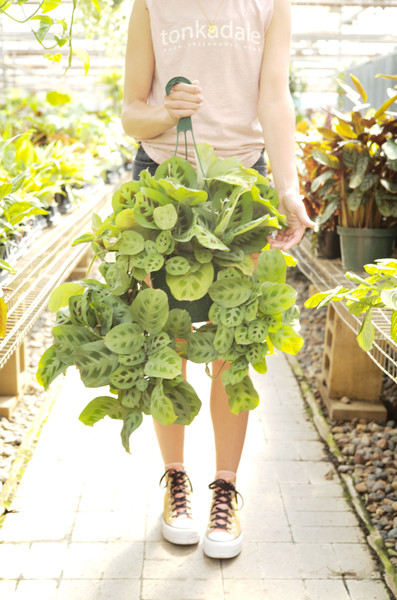Pet Friendly Plants
Posted by Jessie Jacobson on Jul 10th 2022
Pet Friendly Plants
Our collective love of plants and pets is inseparable. We love them both and treat them as members of the family. We name them, we feed them, we water them, we enjoy them. And both need to live in harmony as high-ranking members of the household.
Know Your Pet. Some animals never show interest in plants. Others will paw, shred, dig, and devour. Some will dump the whole plant over and tromp around in the dirt.
Best practices dictate that you keep plants out of reach. Dog owners usually find this doable while cat owners know this is easier said than done. Consider hanging plants, shelves, or even a glass cabinet to display your house plants while also keeping them out of reach. Buyer beware, cats can activate squirrel mode and hurtle through the air just to quell their curiosity for the jungle that awaits.
At the end of the day, if your pet eats a non-toxic or even a mildly toxic plant, keep a close eye on them. Eating a lot of a little never feels good. What exactly does toxic mean when it comes to plants? Plants considered toxic can vary significantly in the level of potential harm. Most toxic plants cause mild symptoms such as skin irritation, drooling, and perhaps vomiting and stomach upset. Usually, pets learn not to chew on specific plants after an uncomfortable experience. However, some plants are dangerous, and the myths surrounding some plants make it difficult to tell the difference between mild and dangerous toxicity. Poinsettias, for example, would need to be eaten in large quantities to cause significant harm, but only a small amount of an Easter Lily needs to be ingested to cause a painful death for kitties.
If you’re unsure how your pet will react to plants, start with varieties known to be safe.
Low light tolerant plants
- Calathea
- Cast Iron Plant
- Prayer Plant (Maranta)
Medium light
- Air Plants and Tillandsia
- Begonia (not for cats)
- Bromeliads including Aechmea, Neoregelia, and Cryptanthus
- Fittonia
- False Aralia (not for cats)
- Ferns including Boston Fern, Sword Fern, Mother Fern, Button Fern (never Asparagus ferns for cats)
- Goldfish plant
- Grape Leaf Ivy
- Jewel Orchid
- Majesty Palm (Ravenea rivularis)
- Parlor Palm (Chamaedorea elegans)
- Areca Palm (Dypsis lutescens)
- Neathe Bella Palm
- Kentia Palm (Howea forsteriana)
- Polka Dot Plant (Hypoestes)
- Pilea, including Pilea peperomoides
- Selaginella Moss
- Spider Plant
- Staghorn Fern
- Swedish Ivy
Bright, indirect light
- African Violet, and others in the African Violet family
- Haworthiopsis
- Holiday Cactus
- Hoya
- Lipstick Plant
- Norfolk Island Pine
- Peperomia
- Zebra Plant
Bright light
- Cactus (as long as pets don’t get too close)
- Jasmine, but not Gardenia varieties
- Orchids
- Orchid Cactus
- Ponytail Palm
- Some Succulents including Burro’s Tail Sedum, Echeveria, Living Stones, Baby Toes, Aeonium
ASPCA is a great resource for pet safety when it comes to plants both indoors and in the garden. Have fun curating your pet-safe collection! Shop pet friendly safe plants at Tonkadale here!

